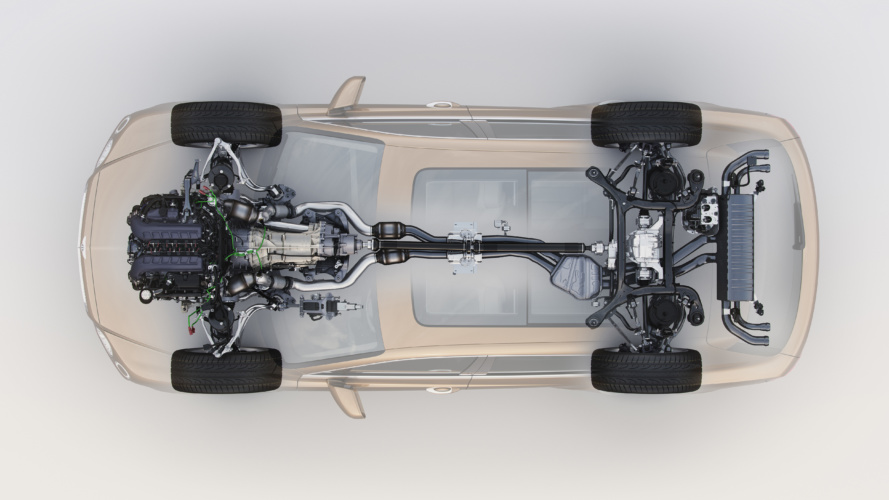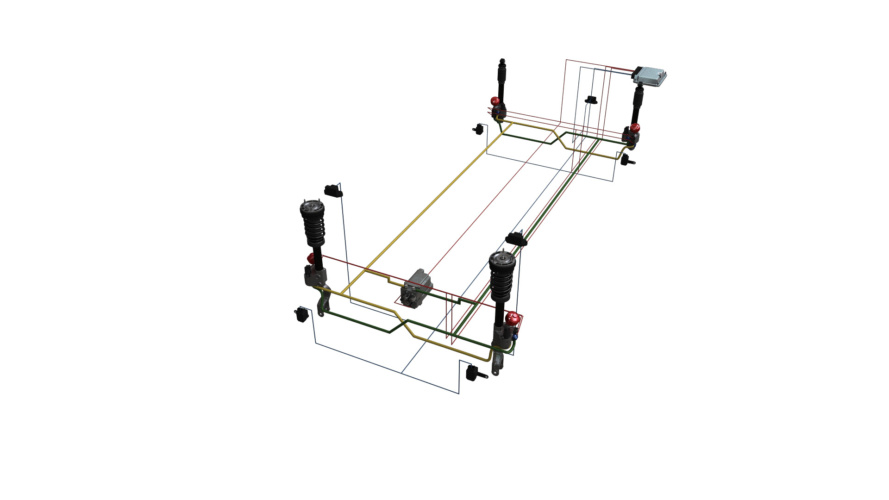We often talk about cars defying physics. That’s perhaps something of an oxymoron. But when a high-riding 2.4-tonne SUV can dance through a set of S-bends like a sports car, it really does feel like it’s bending the laws of nature. And yet that’s precisely what active and semi-active suspension systems can achieve.

By adjusting the suspension to suit the prevailing conditions – or, in some cases, even pre-empting them – it’s possible to blend ride comfort and dynamic ability in a way that simply isn’t possible with passive systems.
One of the most effective ways of doing this is to use adaptive anti-roll bars. Unlike conventional anti-roll bars, these devices can vary the amount of load that resists the car’s body roll. This allows the roll stiffness to be tailored to different use cases. For instance, the system might detect a large steering input and react accordingly or it might adapt its behaviour to different vehicle speeds.
Lancaster student creates new suspension design
Schaeffler and Continental are among the suppliers who offer systems that work on this principle. The two companies offer separate products, but they collaborated on the underlying technology, which sees the anti-roll bar split into two halves, connected by a three-stage planetary gearbox and a 48-volt electric motor. By rotating one way or the other, the motor can apply up to 1300Nm of torque to each half of the anti-roll bar, resisting wheel movement on that side of the vehicle. The torque is measured precisely with the help of a non-contact sensor and full actuation can be reached in 0.3 seconds.
One advantage of this approach is that it’s relatively easy to integrate into a chassis that’s been designed for traditional anti-roll bars. It’s also quite energy efficient as the system only consumes energy when the motor is applying torque (and only a small amount if it’s maintaining an existing load).
The other option is to do away with the anti-roll bars completely. Mercedes’ Active Body Control system uses hydraulic servos on the suspension struts to generate forces that oppose unwanted movement. Recently, the firm has taken things a step further with its Magic Body Control system, which uses a lidar scanner to analyse the upcoming road surface and pre-empt the required spring and damper characteristics.

Other cars use hydraulically-interlinked systems, where displacement of one wheel forces fluid into the dampers on the other side to resist body roll. The basic concept here is not new. Citroën and BMC both had passive interlinked systems more than half a century ago (although initially both were only linked fore-and-aft). Recently, however, Tenneco has revived the concept with its Kinetic system, which is believed to be the basis of the Proactive Chassis Control system on McLaren’s Super Series cars.
Where McLaren’s application of this technology takes things to a whole new level is its control. A series of solenoid-operated needle valves limit the flow rates – side-to-side and front-to-back – to continually adjust the bump and roll stiffness at both ends of the car. It’s phenomenally effective and allows these cars to blend genuine comfort with the sort of cornering performance that was only available on the race track until recently.

The potential applications of these systems extend far beyond supercars, though. With the continuing SUV craze and the move towards electric and hybrid powertrains, everyday cars are getting heavier. That makes it harder than ever to control their mass while still providing a comfortable ride. The technology also complements connected and autonomous vehicles, allowing the suspension to adapt itself to the road ahead.
On test: Bentley Bentayga
And so we head back to those S-bends. At more than 1.7 metres tall and weighing 2,395kg, the Bentley Bentayga V8 is not a natural athlete. Or at least, it shouldn’t be. But flick the rotary controller on the transmission tunnel into Sport mode and it will carve through corners with barely a hint of body roll. Even in this stiffest setting, however, it glides imperiously over rough roads.
Bentley uses an electric anti-roll bar system coupled with twin-chamber air suspension. As with any semi-active system, the great benefit is that it only firms things up when you need it to – the anti-roll bar can be softened or even completely decoupled the rest of the time. In some cases, the motor is left connected and the 48-volt system can actually harvest energy from the suspension movement.
Speak to the Bentley engineers and they’ll tell you that the Bentayga has the broadest remit of any of their cars. In fact, possibly of any car on the road. With its sporting heritage and 180mph performance, the big Bentley needed to deliver a genuinely dynamic driving experience. On the other hand, it also needed to offer limousine-like comfort and even a degree of off-road ability.
It’s doubtful that many owners will venture off the beaten track in their Bentayga, but it nonetheless manages to provide 245mm of ground clearance and 500mm of wading depth (despite the electronics mounted on the chassis). Meanwhile, decoupling the anti-roll bar allows the wheels to reach full droop for maximum wheel articulation when driving off-road.
Given the focus on refinement, it was imperative that the motor-driven anti-roll bar system should be silent and seamless in its operation. There were also other challenges, such as providing cooling and managing the mind-boggling complex interaction with the other chassis systems.
Perhaps the most impressive thing about this system is that you never really sense it in action. The handling response feels consistent, whatever the speed and road conditions. It’s not even the lack of roll that you notice particularly, but rather a tautness to the Bentley’s demeanour and the way it responds to your inputs.
There are even more overtly sporting SUVs out there, but none that can also match the Bentayga’s levels of comfort and refinement. It may not truly defy the laws of physics, but it certainly uses them to blistering effect.




Project to investigate hybrid approach to titanium manufacturing
What is this a hybrid of? Superplastic forming tends to be performed slowly as otherwise the behaviour is the hot creep that typifies hot...